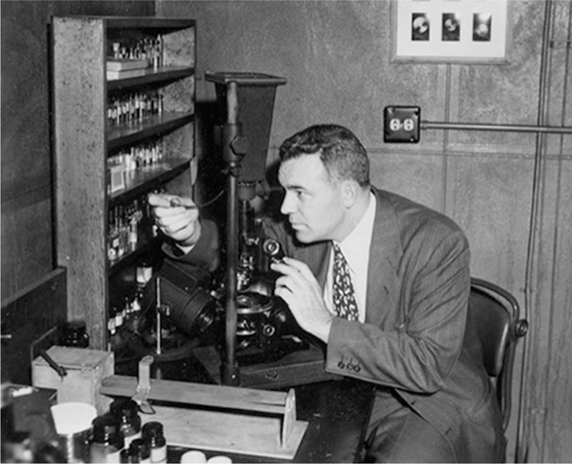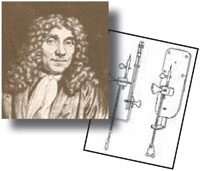
Dr. Walter McCrone, often regarded as the Father of Modern Microscopy, lived a dedicated and fulfilling life. He was born on June 9, 1916 in Wilmington, Delaware and spent his childhood in New York State, where he pursued his academic studies. In 1936, while an undergraduate at Cornell University in Ithaca, he was introduced to polarized light microscopy by Dr. Émile Chamot. Dr. Chamot was an early pioneer of chemical microscopy in the United States. His expertise and mentorship were a meaningful influence on McCrone, who later memorialized Chamot's impact through the endowment of the Chamot Professorship in Chemical Microscopy. Young Walter completed his undergraduate studies in Chemistry at Cornell in 1938 and remained in Ithaca for his graduate work. McCrone's doctoral research focused on applying chemical microscopy to explosives, and he also served as an instructor in chemical microscopy. In 1942, he completed his Ph.D. in Organic Chemistry, using chemical microscopy and microscopical fusion methods, and remained at Cornell for an additional two years to conduct his postdoctoral research.
In 1944, McCrone accepted a position at the Armour Research Foundation (ARF) in Chicago, now the Illinois Institute of Technology Research Institute. He developed and supervised the ARF's analytical chemistry services, and his efforts earned him the position of Assistant Chairman of the Chemistry and Chemical Engineering Department.
McCrone struck out on his own and founded McCrone Associates in 1956, with the aim to apply modern methods to hone light and electron microscopy for solving analytical problems in government and industrial research. It was while on a consulting visit in Cambridge, Massachusetts that he met his wife-to-be, Lucy, who was working as an analytical chemist at Arthur D. Little. Walter and Lucy fell in love and married in 1957. After their wedding, Lucy moved to Chicago and joined McCrone Associates as a chemical microscopist. McCrone Associates grew from a one-man, one-microscope facility to an internationally recognized consulting firm serving more than 2,000 clients each year.
Through his work and involvement in the community, McCrone saw a technical, scientific, and educational gap, especially in the area of analytical problem solving using microscopy. In 1960, the McCrones founded the McCrone Research Institute in Chicago, a not-for-profit corporation devoted to applied research and teaching optical and electron microscopy and crystallography. During their lifetime, the Institute hosted over 25,000 students in courses covering all facets of microscopy. Enrollments today exceed 30,000 students. McCrone expanded to include McCrone Research Associates, a sister organization headquartered in London, England, and in 1967, the Institute acquired The Microscope journal, originally a British publication dedicated to the advancement of all forms of microscopy used in a variety of research disciplines. The Institute also hosts the yearly Inter/Micro international microscopy conference in Chicago and will present its 72nd annual event in 2022. Today, McCrone Research Institute is one of the preeminent centers for microscopy education, publishing, and research and remains committed to Dr. McCrone's vision.
During his 60-year career, Dr. McCrone published more than 600 technical articles, including 16 books and chapters. He was a leader in the fields of light and electron microscopy, crystallography, ultramicroanalysis, and particle identification. His research efforts influenced many fields, from forensics to materials science to art. His own work never interfered with his commitment to his students and the greater microscopy community. He is remembered by those he taught for always making himself available and sharing his knowledge. There are not many whose devotion to teaching extends to meeting with students before an 8:00 a.m. class and on weekends and holidays. McCrone was tirelessly devoted to ensuring the next generation was fully equipped with microscopical methods. In 1979, he retired as active president of McCrone Associates, and he sold the business in 1987 in order to spend full time in research, publishing, and teaching while serving as director of McCrone Research Institute until his death in 2002.
McCrone is most widely known for his work with the Shroud of Turin and the Vinland Map. In 1978, he concluded that the Turin Shroud is a medieval painting; his findings were later solidified by radioactive carbon-14 dating techniques. In 1974, he was the first to conclude and publish that the Vinland Map was a post-1920s forgery, after using polarized light microscopy to discover an early version of the man-made pigment anatase on it. Debated for decades, his Vinland Map findings by microscopy 48 years ago were confirmed by Raman spectroscopy in 2002 and again in 2021.
In 2000, McCrone received the American Chemical Society National Award in Analytical Chemistry for his work on the Turin Shroud and for his enduring patience for the defense of his methodologies.
McCrone's career was remarkable in many ways. His pioneering efforts were highlighted by many honors and awards. He is honored for his humanitarian efforts with Ada S. McKinley Community Services in Chicago by the dedication of a facility that bears his name. Dr. McCrone is not only a microscopy pioneer, but also an example of how to live fully and give generously.
Acknowledgement
Special thanks to Dr. Gary Laughlin of the McCrone Research Institute.





